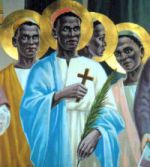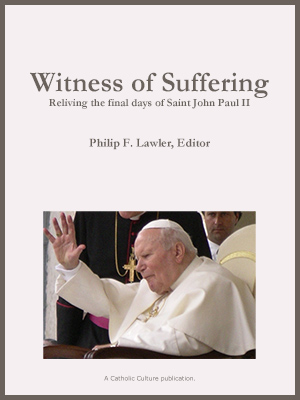Subscribe for free today!
Get newsletters with the latest content, and access to exclusive ebooks and podcast episodes.
Already subscribed? Log in to stop seeing invitations to subscribe.
Our Lady in Russia
by Zsolt Aradi
Christianity in the East venerates Mary with the same profound fervor as in the West. This is true of both Catholics of the Eastern rites and Christians not united with Rome, commonly called the Greek Orthodox. "The Cult of Mary…has its strongest roots in the early church of the east. The great Marian feast days derive from the eastern liturgies. The Greek fathers produced the first literary documents of Marian devotion. From Eastern artists came the most ancient treasures venerated in Roman shrines…from the popular cult of the east came the custom of keeping a picture of Mary in Catholic homes. Mary's first recorded apparition was to St. Gregory of Nazianzen. Her first popular shrines were in Caesarea, Edessa, Lydda and Mt. Athos. Much earlier than the west, eastern theologians found the proper idiom in which to express the doctrine of Mary's Immaculate Conception. This cult of Mary remains strong today even among the dissident churches" ("America," National Catholic Weekly Review).
Inasmuch as most of the eastern Christians belong to the dissidents, and the greatest of the dissident churches is the Russian Orthodox Church, a section of this book is devoted to the living cult of Mary as expressed in those ancient and still existing shrines in Russia. There are many divergences between the Catholic Church and the dissident Russian Church, but the roots of the veneration of Mary are the same.
Most historians agree that the Russian soul has prophetic and messianic tendencies. Its essence is wrapped in a certain kind of hopeful enthusiasm, which sometimes takes an almost apocalyptic form.
The Russian Church strongly believes that she has not only a spiritual mission but a historical one as well. The messianistic and prophetic tendencies often give rise to most confusing ideas. There were movements, which called Moscow "the third Rome" and Kiev "the second Jerusalem." After the conquest of Constantinople by the Moslems, Kiev, which was closely tied to the Eastern Church, wanted to take up the role of the ancient Byzantium. Many writers insist that the Russians are the chosen people and thus Russia is to be considered "the new Israel."
The religious inheritance of Russia is based on the Byzantine formalistic tradition and on the Syrian-Egyptian asceticism. These divergent forces motivate the seemingly never-ending drama of the Russian Church. Byzantine formalism creates a colorful liturgy and stresses the importance of ceremony. At the same time there is within the Church a tradition, which gives primary importance to the ascetic virtues. When these traditions conflict, unity and harmony within the Church is impaired. There is, however, one aspect, which has remained constant--even in the Russian Church--and this is that all the activity of the Church centers invariably about the sacrament of the Eucharist. This sacrament has always given strength to the Russian Orthodox Church under many adverse circumstances, including those of the present time. One can safely assert in this respect that the Russian Church is still nourished from the same roots as the Catholic, through their common attitude toward the Mystery of the Incarnation. And because the Mystery of the Incarnation is inextricably bound up with the person of Mary, the cult of the Blessed Virgin in Russia has profound meaning.
It shows again the remarkable role of the Holy Virgin as mediator and intermediary between heaven and earth, between nation and nation, and even between the different parts of Christianity. Thirty-seven years of atheist propaganda and Marxist indoctrination could not divert the people from her. Her icons were, with few exceptions, saved.
The Orthodox Church in Russia is not free; religious functions, though permitted, are reduced to a ceremonial. Some of the churches have been destroyed, others converted into profane use and later reconverted for religious services. The organization of the Church is controlled by the completely atheistic state. But the soul of the individual cannot be controlled; people pray to the one and only God, even as their ancestors did; and to the Blessed Virgin, the most powerful reminder of the mystical and historical fact of the Incarnation.
This item 3202 digitally provided courtesy of CatholicCulture.org






